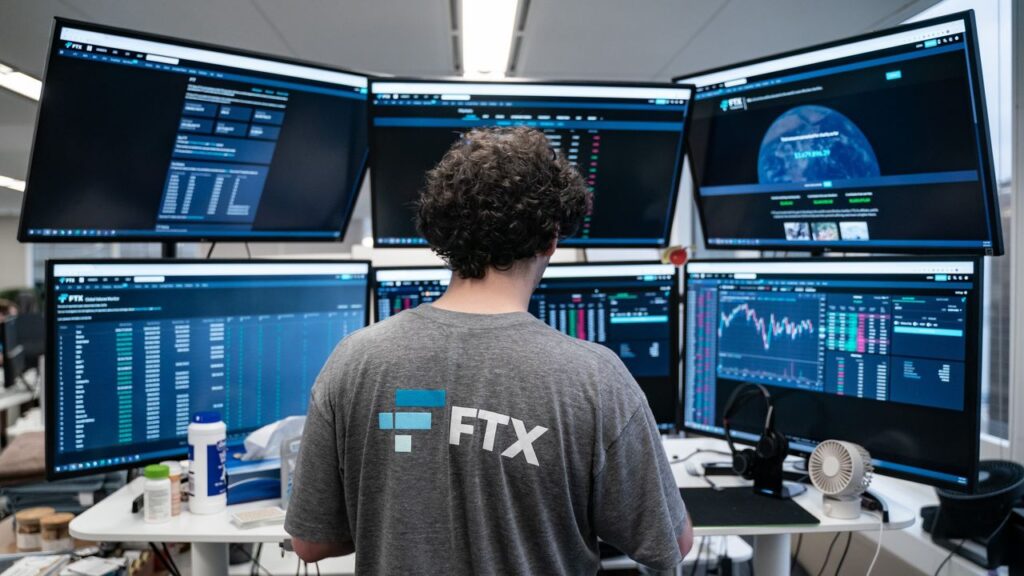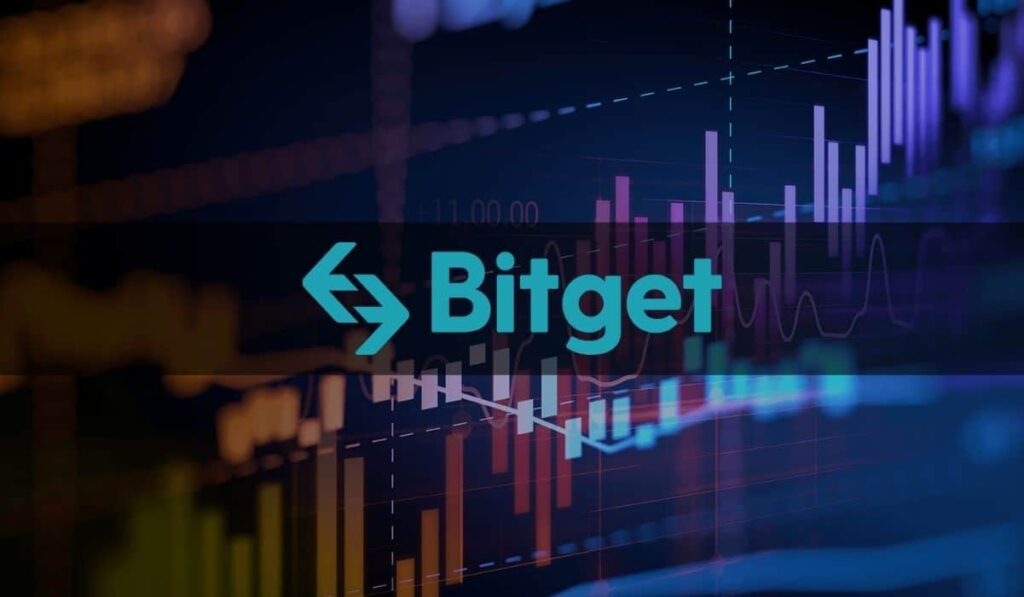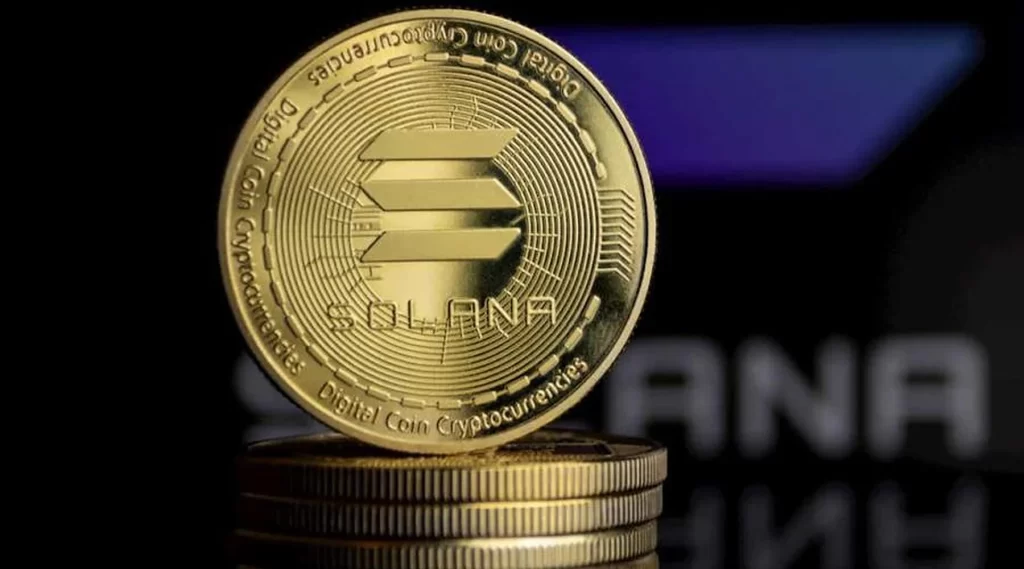In less than two months, institutional investment in Bitcoin has witnessed a staggering influx of over $1 billion, signaling a resurgence in interest in cryptocurrencies.
CoinShares, a prominent crypto asset management firm, highlighted this remarkable trend in its latest weekly report on November 13, underscoring the growing capital flow into Bitcoin and altcoins.
The surge in Bitcoin, Ether, and select altcoin prices can be attributed to the mounting excitement surrounding the potential approval of the United States’ first spot exchange-traded fund (ETF).
Since November 2022, the total market capitalization of the cryptocurrency market has skyrocketed by $600 billion, according to data from TradingView.
However, the past two months have witnessed a substantial uptick in funds allocated to crypto investment products, with CoinShares revealing, “Digital asset investment products saw inflows totaling US$293 million last week, bringing this 7-week run of inflows past the US$1 billion mark, leaving year-to-date inflows at US$1.14 billion, making it the third-highest yearly inflows on record.”
One of the most noteworthy statistics indicating the resurgence of crypto in 2023 is the Assets Under Management (AUM) of crypto exchange-traded products (ETPs).
Since the beginning of the year, this figure has nearly doubled, with a remarkable 10% increase occurring in just the past week.
CoinShares noted, “At US$44.3 billion, total AuM is now the highest since the major crypto fund failures in May 2022.”
READ MORE: Ripple CEO Advocates Multichain Future and Regulatory Clarity at Ripple Swell 2023
Moreover, the report highlighted that investors seeking long positions in Bitcoin accounted for the majority of the trading volume.
“Bitcoin saw inflows totaling US$240 million last week, pushing year-to-date inflows to US$1.08 billion, while short-bitcoin saw US$7 million outflows, indicative of continued positive sentiment,” the report stated.
This renewed interest has also spurred on-chain analytics firm Glassnode to reevaluate Bitcoin supply dynamics.
As the fourth halving event approaches, Bitcoin holdings for storage now exceed the amount mined by a factor of 2.4.
This development signifies a significant milestone for Bitcoin, attracting intrigue from investors due to its impressive historical returns.
Furthermore, Philip Swift, the creator of the statistics platform Look Into Bitcoin, pointed out the increasing number of wallet entities, both large and small, as a sign of growing adoption.
It’s important to note that this article does not offer investment advice or recommendations.
All investment and trading decisions involve risk, and readers are advised to conduct their own research and due diligence before making any investment decisions.
An employee of FTX’s charity division, Ross Rheingans-Yoo, is currently embroiled in a legal battle to receive the remaining $275,000 of his 2022 salary bonus.
Rheingans-Yoo’s lawyers argue that only $375,000 out of his $650,000 bonus has been paid by FTX, claiming that the remaining funds were owed when the crypto exchange filed for bankruptcy in November 2022.
This latest development comes as a response to FTX’s objection, which was filed on October 30th.
In his response, Rheingans-Yoo shared a portion of a Google Doc created by FTX co-founder Sam Bankman-Fried, outlining his employment terms at the FTX Foundation, including a $100,000 base salary.
He stated that Bankman-Fried had informed him about this in a memo.
Rheingans-Yoo emphasized that he was not part of Bankman-Fried’s “inner circle” and had no knowledge of FTX’s alleged misappropriation of customer funds.
According to his lawyers, he was merely a loyal employee caught in a situation not of his making.
Rheingans-Yoo asserts that he is entitled to an additional $650,000 designated for charitable donations, a prepetition salary payment of approximately $5,700, and a post-petition salary of at least $62,800.
READ MORE: Spanish Regulator Takes Action Against Fraudulent Crypto Promoters
FTX’s advisers contend that Rheingans-Yoo has already received his full bonus because he had chosen to have a portion of it repaid via options in the company’s corporate affiliates before the bankruptcy filing. However, Rheingans-Yoo disputes this claim.
The ultimate decision regarding Rheingans-Yoo’s bonus will rest with a Delaware bankruptcy judge overseeing FTX’s Chapter 11 bankruptcy proceedings.
Notably, FTX had previously sued Rheingans-Yoo’s Latona Biosciences Group, Sam Bankman-Fried, and several other defendants in July.
The lawsuit sought the return of $71.6 million in investments and donations allegedly directed to various life science companies. FTX alleges that Rheingans-Yoo and Bankman-Fried personally benefited from these transactions, while FTX and Alameda Research did not.
The crypto exchange claims that these transfers were made with the intent to hinder, delay, or defraud present or future creditors, a fact known by the FTX Foundation, Latona, and Bankman-Fried.
Rheingans-Yoo maintains that his work at Latona involved analyzing potential recipients, engaging with their founders and executives, and conducting due diligence, all with the aim of producing positive societal outcomes.
The outcome of this legal dispute will undoubtedly have significant implications for both parties involved.
Taiwanese cryptocurrency exchange Bitgin finds itself under intense scrutiny as it faces allegations of money laundering, prompting an investigation by the country’s law enforcement agencies.
The unfolding saga centers around the arrest of Yuting Zhang, the firm’s Chief Operating Officer, who has been detained by Taiwanese authorities due to his purported involvement in the “Eighty-Eight Guild Hall” money laundering incident.
Earlier, Zhemin Guo and Chengwen Tu, both local businessmen, were accused by the police of orchestrating a colossal money laundering operation worth billions of dollars.
Their scheme allegedly involved the utilization of foreign exchange offices and cryptocurrency exchange accounts to launder illicit proceeds obtained through wire fraud activities conducted overseas.
Furthermore, Tu stands accused of deceiving the country’s tax authorities by falsely claiming 300 million New Taiwan dollars (equivalent to $9.28 million) in fraudulent export tax refunds through the illicit overseas sale of video game credits.
A notable aspect of this incident is Taiwan’s lack of an official licensing framework for cryptocurrency exchanges.
In a bid for self-regulation and to engage with political officials, Bitgin and its industry peers established the Virtual Asset Service Provider Preparatory Office back in September.
READ MORE: China’s New Phishing Scam Targets Crypto Users Through Fake Skype App
Commenting on the situation, Yuling Tsai, the General Counsel of the Taiwan VASP Association, remarked, “This time, a member of the preparatory group was involved in the investigation case.
The preparatory group immediately held a meeting and issued a public response.
The members involved in the case also took the initiative to suspend participation in the work of the preparatory group.”
Bitgin has sought to reassure its users, stating that its operations remain unaffected, and user rights are safeguarded.
According to the exchange, Chief Operating Officer Zhang’s involvement in the Eighty-Eight Guild Hall money laundering incident transpired from late 2021 to March 2022.
The exchange claims that Zhang ceased all communications with the implicated parties after discovering allegations of money laundering.
The exchange has also pledged full cooperation with the investigative authorities, offering all necessary assistance to ensure a smooth and expeditious investigation.
Bitgin expresses a hope that the facts surrounding the case can be clarified promptly, indicating its commitment to resolving the matter transparently.
On November 12, the Bitcoin mining community reached an annual all-time high (ATH), generating more than $44 million in combined block rewards and transaction fees.
Bitcoin mining relies on specialized computer equipment, known as mining rigs, to confirm transactions and create new blocks. Miners currently earn 6.25 BTC for successfully creating a block, along with transaction fees.
This milestone marked the first time in 2023 that daily Bitcoin mining rewards surpassed the $44 million mark, a level previously observed in April 2022, as reported by data from blockchain.com.
Between April 2022 and November 2023, Bitcoin miners faced several challenges that contributed to a decline in their revenue.
These included a prolonged bear market, negative investor sentiment stemming from scams and ecosystem collapses, and regulatory restrictions hindering Bitcoin transactions.
However, 2023 marked a turnaround for the industry, driven by crypto entrepreneurs who worked to restore investor confidence. Increasing market prices and growing public interest led to a year-long uptrend in mining revenue.
READ MORE: Former FTX Executives Launch Backpack Exchange in Dubai
Marathon Digital Holdings, a prominent Bitcoin mining firm, reported a staggering 670% year-on-year revenue surge in the third quarter of 2023, alongside a nearly five-fold increase in Bitcoin production.
Beyond individual miners and companies, many countries actively participate in securing the Bitcoin network through mining operations.
For instance, Bhutan, a landlocked Asian nation, has been engaged in Bitcoin mining powered by hydropower since the cryptocurrency’s price was at $5,000 in April 2019.
Bhutan is now exploring partnerships to expand its mining endeavors further, including negotiations with the Nasdaq-listed mining company Bitdeer to secure 100 megawatts of power for a Bitcoin mining data center within its borders.
This collaboration could boost Bitdeer’s mining capacity by approximately 12%.
In summary, the Bitcoin mining community achieved a significant milestone in November 2023, reaching an annual all-time high in revenue.
While the industry faced challenges in previous months, it experienced a resurgence in 2023, fueled by market dynamics, increased interest, and strategic efforts by key players in the crypto space.
In the ever-evolving landscape of cryptocurrencies, a debate rages on between proponents of a singular blockchain and those who envision a future comprising multiple blockchains working in harmony.
Ripple CEO Brad Garlinghouse recently weighed in on this discourse during a keynote fireside chat at the Ripple Swell 2023 event in Dubai.
Garlinghouse, while acknowledging the diversity within the crypto sphere, actively discouraged the concept of maximalism.
Garlinghouse’s vision for the future is one of a “multichain world.” He stressed the importance of avoiding maximalism and instead embracing the idea that various cryptocurrencies and blockchains will coexist and collaborate to form a dynamic ecosystem.
During his address, the Ripple CEO also identified two critical factors that could fuel greater institutional adoption of digital assets worldwide.
Firstly, he emphasized the need for clear regulatory frameworks, highlighting that while the United States contributes significantly to the global economy, it lags behind in establishing comprehensive crypto regulations.
Garlinghouse contrasted this with regions like Dubai, where regulators engage constructively with the crypto sector.
READ MORE: Bitcoin Argentina Proposes Progressive Cryptocurrency Regulation Framework
In Garlinghouse’s view, regulatory clarity is essential for large institutions to feel confident about entering the crypto space.
Without a well-defined framework, institutional participation remains hampered by uncertainty.
Additionally, Garlinghouse stressed the significance of “demonstrated utility” in the crypto space.
He argued that the primary goal should not be speculative trading but rather showcasing practical uses for cryptocurrencies.
Speculation alone, in his judgment, does not lead to the promised land of crypto’s full potential.
In essence, Brad Garlinghouse’s perspective at Ripple Swell 2023 presented a vision of the crypto future characterized by diversity and cooperation among various blockchains.
He advocated for regulatory clarity as a catalyst for institutional adoption and underscored the importance of cryptocurrencies demonstrating their practical utility.
As the crypto landscape continues to evolve, it remains to be seen how these insights will shape the industry’s trajectory in the years to come.
A new phishing scheme has emerged in China, specifically targeting cryptocurrency users. This fraudulent operation utilizes a counterfeit Skype video app to carry out its malicious activities.
According to a report by SlowMist, a crypto security analytics firm, the scammers behind this scheme have capitalized on China’s ban on international applications as the foundation of their fraud.
Many mainland users often resort to third-party platforms to search for these banned applications, making them susceptible targets.
Mainland users frequently seek social media applications like Telegram, WhatsApp, and Skype, which are among the most commonly searched for applications.
Scammers exploit this vulnerability by distributing fake, cloned applications embedded with malware designed to attack cryptocurrency wallets.
SlowMist’s analysis unveiled that the fraudulent Skype application, which was recently created, displayed a version number of 8.87.0.403. In contrast, the latest official Skype version is 8.107.0.215.
The security team also identified that the phishing back-end domain initially impersonated the Binance exchange on November 23, 2022, but later transformed to mimic a Skype back-end domain on May 23, 2023.
The existence of this fake Skype app was first brought to light by a user who fell victim to the scam and lost a substantial amount of money.
Further investigation of the fake app’s signature revealed that it had been tampered with to insert malware.
READ MORE: FTX Bankruptcy Estate Files $1 Billion Lawsuit Against ByBit and Executives
Upon decompiling the app, the security team discovered a modified Android network framework called “okhttp3,” which was adapted to target cryptocurrency users.
The modified okhttp3 framework, unlike the default version that handles regular Android traffic requests, obtains images from various directories on the user’s device and monitors for new images in real time.
The malicious okhttp3 requests users to grant access to internal files and images, a request that often goes unnoticed as many social media applications require similar permissions.
Subsequently, the fake Skype app commences uploading images, device information, user IDs, phone numbers, and other data to its back end.
Once the fake app gains access, it continuously scans for images and messages containing strings resembling cryptocurrency addresses, such as those for TroN and Ether.
If such addresses are detected, the fake app automatically replaces them with pre-set malicious addresses chosen by the phishing gang.
However, as of November 8, SlowMist’s testing revealed that the wallet address replacement had ceased, and the phishing interface’s back end was no longer returning malicious addresses.
The SlowMist team promptly flagged and blacklisted all wallet addresses associated with this scam to protect potential victims from falling prey to the scheme.
Cryptocurrency trading platform Bitget has made a significant decision to forgo its plans of obtaining a Virtual Asset Trading Platform (VATP) license in Hong Kong, citing various business and market-related factors as the driving force behind this move.
Bitget’s Hong Kong division, known as BitgetX and accessible through the domain BitgetX.hk, will officially cease its operations by December 13, 2023, according to an official announcement made on November 13.
By opting not to pursue the VATP license, Bitget will have no choice but to permanently withdraw from the Hong Kong market, as detailed in the announcement.
The company has taken the initiative to strongly urge its users to withdraw their cryptocurrency assets from BitgetX before the December 13 deadline.
After this date, the BitgetX website will become inaccessible, rendering users unable to manage or access their assets on the platform.
Bitget has clarified that, during this transition period, only withdrawal services will remain available, with the exchange also ceasing to accept new users as of November 13.
READ MORE: Bitcoin Argentina Proposes Progressive Cryptocurrency Regulation Framework
Bitget, a significant player in the global cryptocurrency exchange landscape, established in 2018, facilitates the trading of nearly one million in cryptocurrency on a daily basis, according to data from CoinGecko.
The exchange’s Hong Kong division had previously expressed its dedication to securing the VATP license, ensuring compliance with the new crypto framework established by Hong Kong’s Securities and Futures Commission in June 2023.
Coinciding with Bitget’s decision, OSL, one of the pioneers in acquiring a Hong Kong crypto license, made an announcement of its own on November 13.
OSL suspended its stock market trading activities at the request of its operator, BC Technology, on the Stock Exchange of Hong Kong.
Rumors have circulated in the industry suggesting a possible connection between Bitget and OSL. Speculation emerged that Bitget may have acquired or invested in OSL’s business.
In October, BC Technology, the operator of OSL, was reported to be exploring the possibility of selling the OSL exchange for HKD 1 billion, equivalent to approximately $128 million.
Tether, a prominent stablecoin issuer, has been steadily increasing its supply of USDT tokens, with a remarkable surge in minting activities over the past month.
According to blockchain data provider Whale Alert, Tether minted an additional 1 billion USDT on the Tron blockchain on November 10.
This significant creation of USDT followed closely on the heels of another 1 billion USDT minted on the Ethereum blockchain on November 9.
Furthermore, Tether had previously issued 2 billion USDT in two separate transactions on the Tron blockchain on November 3 and October 19.
Paolo Ardoino, Tether’s Chief Technology Officer and new CEO, commented on this surge in USDT issuance, stating that the latest 1 billion USDT minted on the Tron network was intended to replenish their USDT inventory.
He emphasized that this was an authorized but not yet issued transaction, indicating it would be used for future issuance requests and chain swaps.
These recent USDT issuances constitute a significant portion of the total USDT supply for the year 2023.
Based on Whale Alert data, Tether’s total USDT minting for the year should reach 22.75 billion, with 57% (13 billion) issued on the Tron blockchain and the remaining 9.75 billion on the Ethereum blockchain.
Tether has been actively involved in minting new USDT stablecoins throughout the year.
In March 2023, they minted an astonishing 9 billion USDT, in addition to the 3 billion minted in the previous month. They also minted 3.75 billion USDT between June 12 and July 12.
READ MORE: FTX Bankruptcy Estate Files $1 Billion Lawsuit Against ByBit and Executives
Simultaneously, Tether has engaged in burning USDT coins, reducing its supply.
Notably, on August 22, they burned 1.2 billion USDT on the Tron blockchain, following previous burns of 3.1 billion Tron-based USDT in June and 2 billion Ethereum-based USDT in February.
The cryptocurrency community has reacted swiftly to Tether’s recent minting activities, recalling the impact of previous aggressive USDT minting on the market.
Some users pointed out the correlation between substantial Tether issuance and significant market events, such as the disruptions in the banking sector in March 2023.
Tether has previously denied allegations of exposure to these events.
Additionally, Tether has been working on integrating new components into its ecosystem.
CEO Paolo Ardoino announced on Twitter that the company is preparing to unveil five new projects in 2024, some of which have the potential to disrupt popular Web2 centralized services.
As of now, Tether has not responded to requests for comment from Cointelegraph.
An anonymous hacker group has claimed responsibility for a major data breach involving approximately 300,000 customers of Coin Cloud, a Bitcoin ATM company.
The cybersecurity account known as Vx-underground, which previously operated on Twitter, disclosed this information.
According to the hackers, they successfully infiltrated Coin Cloud’s systems, compromising sensitive customer data.
The breach reportedly resulted in the theft of personal information from the affected customers.
This data includes Social Security Numbers, Date of Birth, First and Last Names, email addresses, and telephone numbers.
Additionally, the hackers claim to have accessed 70,000 customer selfies, which were apparently captured by the ATM cameras for verification purposes.
Furthermore, the compromised data pertains not only to US residents but also extends to users from Brazil.
In a startling revelation, the hacker group declared that they had also managed to obtain the source code for Coin Cloud’s backend systems.
As of now, Coin Cloud has not issued an official statement addressing the security breach.
READ MORE: Bitcoin Argentina Proposes Progressive Cryptocurrency Regulation Framework
In the wake of these alarming developments, Cointelegraph attempted to contact both Coin Cloud and Vx-underground for further comments.
Regrettably, there has been no immediate response from either party.
Adding to the complexity of this situation is the fact that Coin Cloud had previously filed for bankruptcy earlier in the year.
On February 8th, the company publicly announced its decision to file for Chapter 11 reorganization in a United States bankruptcy court.
According to Chris McAlary, the CEO and president of Coin Cloud, this step was taken to restructure the company’s debt and safeguard the interests of its creditors.
Financial documents from February 7th revealed that Coin Cloud had liabilities ranging from $100 million to $500 million, while its assets were valued between $50 million and $100 million.
The breach and subsequent data theft pose serious concerns for Coin Cloud customers, as their personal information has been exposed to potential misuse.
The company’s response to this incident, as well as any further developments in the investigation, will undoubtedly be closely monitored in the coming days.
Solana’s price has experienced a remarkable surge, rising by an impressive 40% within the past week, reaching a new high for the year 2023, with a value of approximately $58.
This performance marks Solana’s strongest weekly showing since January of the same year.
Several factors have contributed to these gains, driven in part by a broader uptrend in the cryptocurrency market, fueled by the excitement surrounding Bitcoin ETFs and an increasing appetite for risk among investors.
Interestingly, Solana’s recent ascent coincides with a daily selling of 250,000 to 750,000 SOL tokens by the FTX bankruptcy estate over the last two weeks.
This selling activity follows the approval by the Delaware Bankruptcy Court in September 2023 to sell 55.75 million SOL tokens.
Concerns initially surrounded these sales, but their limited impact, thanks to some tokens being vested or locked, along with a weekly sale limit of $100 million, have shifted investor sentiment from fear to enthusiasm.
The positive momentum in Solana has also been reflected in Solana-focused funds, which serve as an indicator of institutional interest in the SOL market.
These funds have seen inflows totaling $10.80 million during the week ending on November 3, according to CoinShares.
READ MORE: High Court Orders Liquidation of Crypto Lender Amid Frozen User Funds
The overall bullish trend in cryptocurrency prices, driven by Bitcoin’s ascent toward $38,000, has been further amplified by Solana’s exceptional performance over the past 30 days.
Solana’s futures open interest has also surged to approximately $772 million on November 11, the highest level since November 2021 when SOL reached its all-time high of $260.
This rise in open interest signals a heightened level of interest and potentially increased liquidity in the market.
Moreover, Solana’s rising open interest coincides with an uptick in funding rates, indicating a preference for leveraged long positions among investors.
The funding rate for SOL recently reached 0.035% per eight hours, equating to a weekly cost of 0.735% for leveraged longs, reflecting a strong bullish sentiment in the market.
In summary, Solana’s recent price gains are part of a larger bullish breakout movement.
Notably, SOL broke above the horizontal trendline resistance of its ascending triangle channel two weeks ago.
If this bullish pattern continues to play out, Solana’s price could target approximately $90 by the end of the year, representing a 50% increase from its current levels.
However, it’s important to note that the relative strength indicator (RSI) has reached its most overbought level since September 2021, suggesting a potential correction in the market, with a possible correction target near the triangle’s upper trendline around $30.











